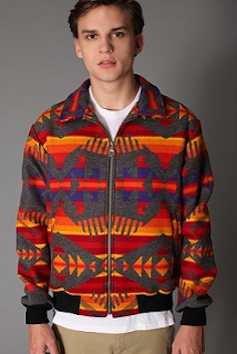It’s rare that a few months go by without a well-publicized incident of cultural appropriation. Often this concerns Indigenous cultural heritage, which is not protected by standard legal measures.
Last week’s Victoria’s Secret fashion show in Shanghai featured models wearing Indigenous inspired regalia, including feathered headdresses. That this elicited charges of cultural appropriation is not surprising. What is surprising is that Victoria’s Secret did exactly the same thing five years ago, almost to the day.

To mark this latest appropriation, I felt it was time to recirculate a guide that was developed by the Intellectual Property Issues in Cultural Heritage (IPinCH) project, a project I led that explores and facilitates fair and equitable exchanges of knowledge relating to heritage.
In response to the frequent instances of appropriation in the news relating to the fashion industry, members of the IPinCH team produced “Think Before You Appropriate: A Guide for Creators and Designers.”
Taking a practical and pragmatic approach by posing a series of questions to consider, this guide unpacks important questions about cultural appropriation. It provides advice to designers and marketers on why and how to avoid misappropriation and underlines the mutual benefits of responsible collaborations with Indigenous artists and communities.
The lead developer on the guide was Dr. Solen Roth, with illustrations by Eric Simons. Roth has done extensive research on Indigenous cultural heritage and commercial products, especially in Canada’s Northwest Coast.

The guide has much broader applications than just fashion. To note just two instances, it’s been used by one book author to help him decide whether to contact First Nations groups to discuss using their mythology in a children’s book, and by a potter who manufactured Japanese-inspired ceramics.
As my colleagues and I have found, many First Nations and Native Americans are willing to share their culture, and are open to conversations with product developers. Reaching out and consulting can lead to fruitful collaborations and mutually beneficial results.
Here are some excerpts from the guide:
The costs and risks of misappropriation:
For you and your company:
Discrepancies between your practices, on the one hand, and the values you want to be associated with, on the other
Negative campaigns and calls to boycott your business
Costs of removing or modifying a line of products, both online and in stores
Lawsuits and other legal challenges
For Indigenous artists and communities:
Reinforcement of stereotypes that are the source of discrimination
Misrepresentation of Indigenous peoples and their cultural expressions, undermining efforts to educate the public about their histories and culture
Heightened competition for artists and artisans who have been developing these cultural expressions, generation after generation
The benefits of a responsible collaboration:
To you and your company:
Less risk of your products causing offence or harm to Indigenous artists and communities, and less risk to your personal or company credibility
Cultural richness and relevance from higher-quality renditions and more culturally informed interpretations of that cultural heritage
Opening your business to the market of the artists’ networks and communities
Brand association with progressive efforts to counter stereotypes about Indigenous peoples
To Indigenous artists and communities:
Opportunities to counter stereotypes to a broad audience and consumer base
Opportunities for public education about history and culture at a wider scale
Heightened public recognition of community heritage
Artist exposure to a wider audience
Increased economic resources to support individual livelihoods, as well as community efforts to ensure cultural perpetuation
Before designing your product or garment ask:
Does my project truly require the use of Indigenous cultural heritage?
Am I basing my work on accurate knowledge and representations of Indigenous peoples and their cultural heritage?
Am I sure that my work in no way reproduces stereotypes about Indigenous peoples?
Am I sure that my work does not show disrespect for the beliefs and world views of the Indigenous peoples whose cultural heritage inspires me?
Does my work reflect a deep and original reinterpretation of elements from various sources of inspiration, or does it rely on the copying or imitation of existing Indigenous works or styles?
If I embark on a project that is inspired by Indigenous cultural heritage, what steps will I take to ensure that it leads me to a respectful and responsible collaboration?
Author:George Nicholas; Professor of Archaeology, Simon Fraser University
Credit link:https://theconversation.com/a-guide-think-before-you-appropriate-88213<img src="https://counter.theconversation.com/content/88213/count.gif?distributor=republish-lightbox-advanced" alt="The Conversation" width="1" height="1" />

